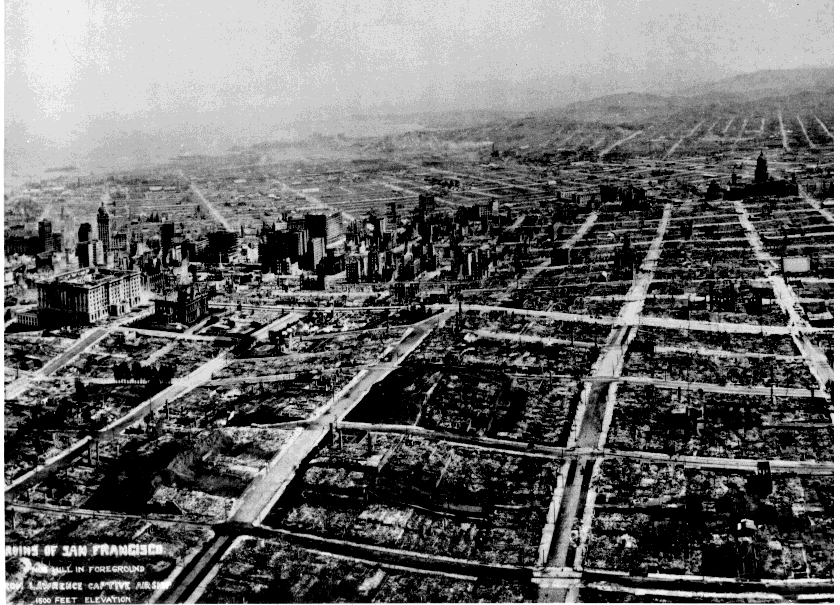TL;DR -- San Francisco stands as an icon in the American psyche for several reasons. There was sufficient traffic from the east to the area to warrant regular routes which started as mere trails. The railroads closed up the gap as they offered the speedy delivery not attainable by the sea routes. Whereas, in 1859, Horace Greeley's route to the city was by stage coach after Kansas City, MO. But, in 1906, San Francisco had a quake. We will have that as a regular theme (reach of New England).
---
San Francisco has been mentioned many times in our posts, as it is a well-known destination by land and by water on the west coast of the U.S. And, it is old. Somewhat. Yesterday, we mentioned Horace Greeley's one-way trip out in 1859. He returned by sea. And, he sent dispatches back to his publishing company that were collected into a book which is currently available on-line.
In our post, we mentioned Gen. A.W. Greeley who is a cousin of Horace's. Too, we brought up the link twixt two Thomas Gardner descendants with the Artic rescue of Greeley by team that included Capt. George William Coffin, a graduate of the Naval Academy. Turns out that the General is also a Coffin cousin of the Captain through his grandfather, Stephen Greeley (aft 1769-1830) of Essex County who was a descendant of Tristram Coffin, Sr. of Nantucket. There are many other New England families in the pedigree of the General.
The General features briefly in this post's look at San Francisco (SF). On April 18, 1906, there was a devastating earthquake in the city that destroyed a large percentage and resulted in several thousand deaths. The U.S. Army was local and available to assist in relief efforts.
This photo was of several taken from kites looking over Knob Hill.
 |
| From USGS, photo of San Francisco after the 1906 quake |
There are many sites with photos and reports which we will look at from time to time. This photo tells many tales of the destruction near the area of Post and Grant which is near to Union Square.
 |
| 1906 damage near Post and Grant |
We will put that on our calendar to remember. Earlier, we learned more about the Salem, MA fire of 1914. The old city of SF was mainly of wooden structures that were leveled. But, brick building burned, as well. Fortunately, the Presidio of San Francisco was not damaged and was able to support the population. Gen. A.W. Greeley was involved in the relief effort and reported that they were feeding 250,000 per day. A tent city was put up at the Presidio and another area close to Golden Gate Park.
On a personal note, John remembers descending by car in April of 1962 from a dreary ride across frozen northern U.S. and through Donner's Pass which was a tunnel of snow into the green valleys of interior CA and then onto the Presidio. That would have been the new city which cropped up as people recovered from the quake.
With respect to the Presidio, we had an earlier post on Jonathan Letterman, MD who was there later in his career. We mentioned the Dr. in relation to his work with battlefield medicine. The effort to clean up after the battles of Antietam and Gettysburg included handling the injured from both sides of the conflict. The Army Hospital in the Presidio was named after Dr. Letterman.
There are many stories about New England's reach to San Francisco that we will look at in the future. But, the early years before and after the Gold Rush will continue to be a topic, as well. 1906 is a good demarcation point for splitting the old and the new.
Remarks: Modified: 05/14/2023
04/29/2023 -- The Fairmont Hotel is visible in the first picture. It has an interesting history, being constructed at the time of the quake. It passed the test. They fixed it up and finished the work. ... We, of course, will pay more attention to the history of the Golden State.
04/30/2023 -- The Geological Survey has a nice map with a legend of the extent of the fire. The legend shows the area of the Fairmont Hotel and the Flood Mansion, both of which still exist.
05/14/2023 -- Added link to the fire area outline.
No comments:
Post a Comment